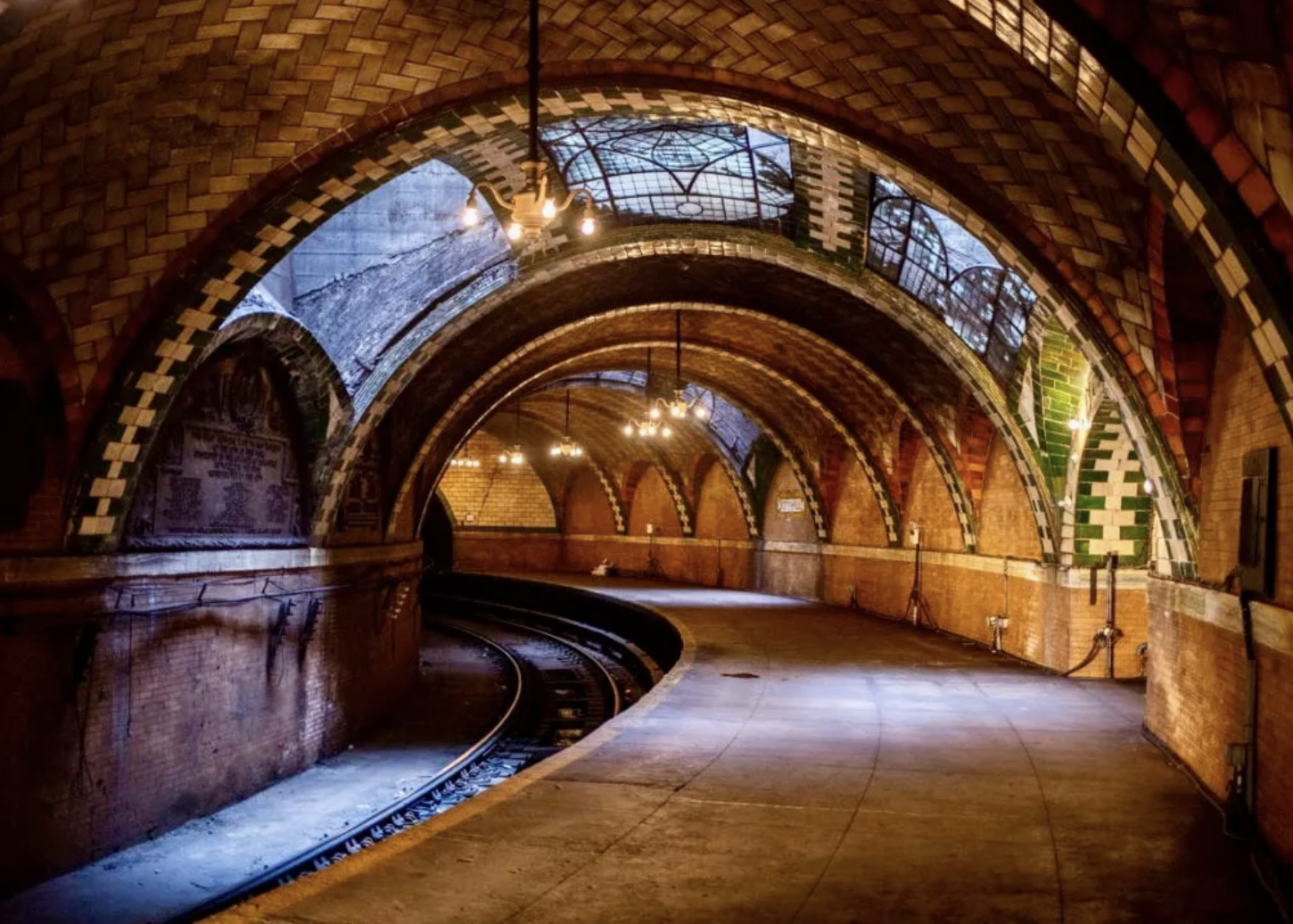THE ORIGINAL 28 STATIONS
City Hall
City Hall: Built and operated by the Interborough Rapid Transit Company (IRT) — the city’s first subway company — City Hall opened in October 1904 with great fanfare, showing off its Heins & LaFarge tiling and Gustavino vaulted ceilings and skylights to New York society. Now shuttered, it is now seen by special appointment.
NEW YORK’S LIFEBLOOD IS ITS SUBWAYS.
Opened in 1904, the Interborough Rapid Transit Company (IRT) laid down the first subway tracks in New York. Others soon followed. Eventually, the Brooklyn Rapid Transit Company (BRT) and the Independent Subway System (IND) would join in and form today’s Metropolitan Transit Authority (MTA) — the various signs still plastered all over the subway. Now comprising more than 840 miles of track, the New York subway sweeps an estimated 5.6 million commuters to their destinations across the five boroughs every day.
The subway system’s legacy runs as deep as the subterranean stations. And within those stations is a museum of priceless art, from the terra-cotta signs designed by architects George L. Heins and Christopher Grant LaFarge to the enamels of Milton Glaser. MTA Arts & Design, the public-private partnership created to oversee the installation of permanent artworks in subway stations, now manages more than 300 works by world famous, mid-career and emerging artists — an “Underground Art Museum.”
For the record, there are two City Hall stations. The first directly under Manhattan’s City Hall and designed by NYC architects Chrisopher Heins & Grant LaFarge and Valencian architect Rafael Guastavino, closed in 1945.
Fascinated by the art of the subway as I used to cross from Grand Central Terminal to 42nd Street stations, I started photographing murals for an article in 2019. Seeing the metro stations on a trip to Uzbekistan made me realize the uniqueness of the canvases of New York even more. When the 2020 Coronavirus hit New York City in the winter of 2020, I continued the project — the art was now easier to access with subways emptied. The Art of the Subway became my pandemic project, and I visited nearly 400 MTA stations across four of the five boroughs. These are the images I took on those platforms, with captions I researched to give the art context and meaning. My only hope for this book is that it helps people realize that public art is everywhere, sometimes in the last place you might expect it.
Although beautiful, it became inconvenient to ride a local train when the express was a block away at Brooklyn Bridge stop. Secondly, the graceful curve of the station, didn’t accommodate longer cars.
Tours of old City Hall resumed just a few years ago and are available by joining the New York City Transit Museum.
Another shot of the Old City Hall station.
The City Hall R, W line, next to City Hall features more practical tiles by Squire Vickers, which helped illiterate riders discern their location.
The newer City Hall station lies just outside City Hall in Manhattan.






